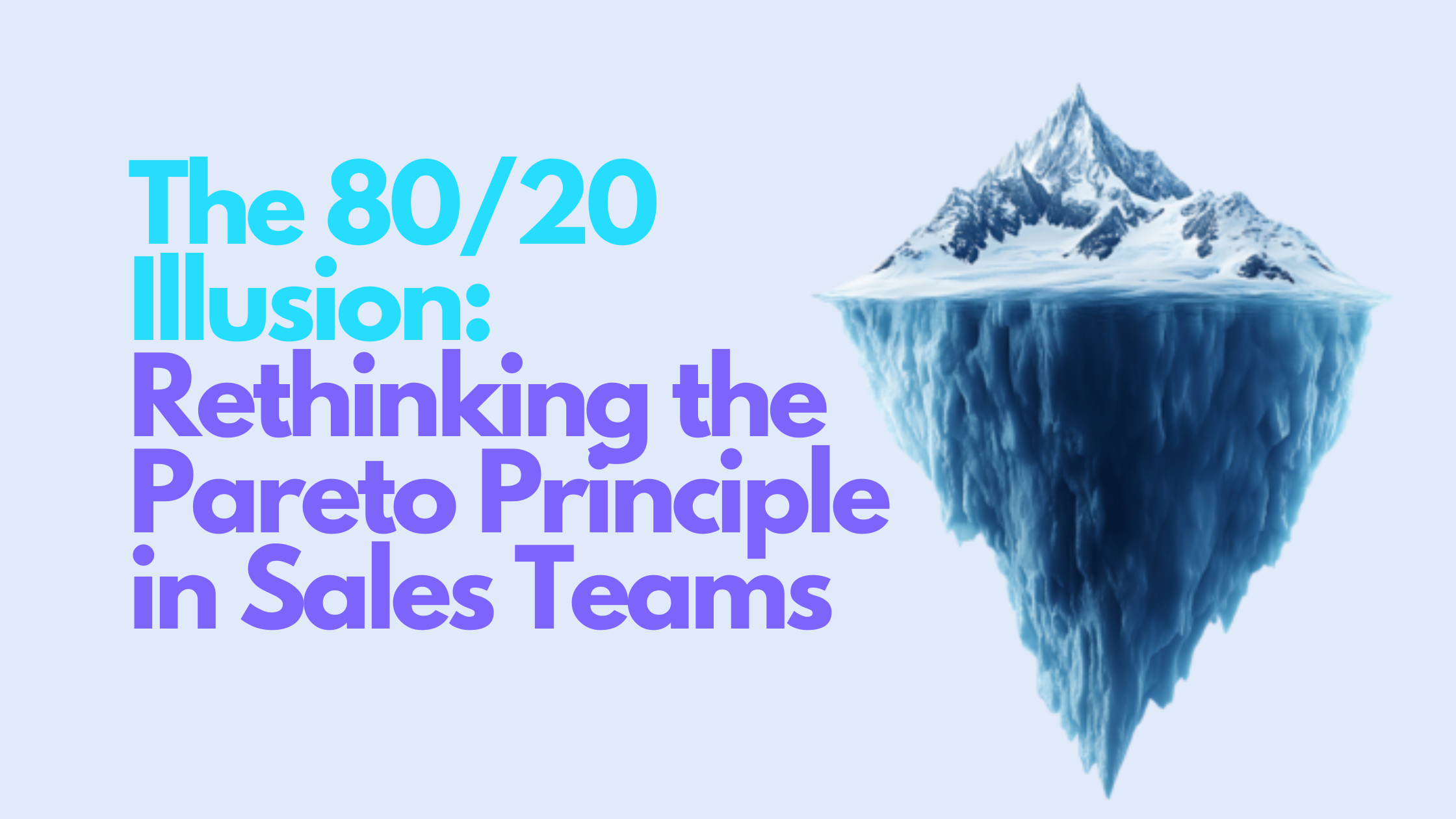Reading Time: 4 minutes
Subscribe
Get the latest Flow State content delivered to your inbox
You can unsubscribe at any time. Privacy Policy.
Vilfredo Pareto, an Italian economist with a cracking name and a sharp beard, first noticed in 1896 that 80% of Italy’s land was owned by 20% of the population. The pattern stuck. Over the years, it’s been spotted everywhere: 80% of customer complaints come from 20% of users, 80% of accidents come from 20% of causes. These days, we know it simply as the Pareto Principle — the idea that results tend to be wildly uneven.
Sales has embraced it with gusto. Most of us have heard it before: “80% of revenue comes from 20% of your sales team.” It’s used as gospel in boardrooms and kick-off decks across the world. But behind that tidy little stat lies a problem. Because when we obsess over the imbalance, we risk designing our teams — and our coaching — around the wrong things.
What Pareto Hides: The Messier 80/20s Behind the Revenue
The most common interpretation of Pareto in sales — that a few reps generate the majority of results — might hold some truth. A study by Xactly found that on average, top-performing sales reps contribute around 50–60% of total revenue, suggesting a skewed curve, though not always a pure 80/20 split.
But focusing solely on revenue hides other imbalances that shape performance just as much — and often do more damage.
A small set of behaviours is often responsible for the majority of lost opportunities. These might include flinching at pricing discussions, skipping over qualification, or failing to reframe objections with confidence. Individually, they seem minor. Repeated daily, they quietly drain pipeline health.
Likewise, 20% of admin tasks tend to create 80% of sales friction. One CRM field. One bit of bureaucracy. One awkward approval loop. A McKinsey report on sales productivity found that salespeople spend only 33% of their time actually selling — the rest gets lost in internal processes and admin.
And of course, a small handful of clients often generate the lion’s share of stress — endless back-and-forths, over-negotiation, or scope creep. These accounts rarely bring the most revenue. But they soak up attention and emotional bandwidth all the same.
So yes, there’s always an 80/20 somewhere. But if we only look at the revenue line, we risk missing the far more valuable questions: where are we bleeding time, energy, and trust — and who’s fixing it?
The Incentive Problem: What Happens When You Worship the Top 20%
When the Pareto Principle becomes gospel, it often creates what I call hero culture. We pour praise, perks, and resources into the few sellers who consistently perform — and quietly neglect everyone else.
This isn’t just a question of fairness. It’s about fragility.
If your revenue depends on a few names on a leaderboard, your pipeline is on a knife-edge. One resignation, one off-month, one bout of burnout — and the quarter’s gone. According to research by the Sales Management Association, companies that rely heavily on their top 20% performers are significantly more vulnerable to attrition-related revenue loss.
And there’s a deeper, subtler cost: the middle 60% often become invisible. They’re not poor enough to trigger intervention, nor starry enough to earn investment. But this group holds enormous latent potential. It’s where coaching, confidence-building, and small shifts in behaviour can transform outcomes — if anyone’s paying attention.
The fix isn’t to dilute recognition. It’s to broaden the definition of value. Sales isn’t just about numbers — it’s about momentum, collaboration, and consistency. If the same few people win every quarter, the culture stops learning.
Coaching with Clarity: Finding the Right 20%
Let’s assume Pareto’s logic is sound. Then the question becomes: which 20% of your team’s skills drive 80% of their outcomes?
This is where the principle gets useful again — not as a revenue pattern, but as a coaching lens.
It’s easy to default to one-size-fits-all training — an away day, a workshop, a webinar. But if you look closely, most reps aren’t broken. They’re just misfiring in one or two specific areas. The key is diagnosis, not prescription.
Maybe someone struggles with objection handling. Not all of them — just that one awkward moment when the buyer says, “We’re already working with someone.” Maybe another always builds rapport but never creates urgency. These aren’t personality flaws. They’re coachable micro-skills.
Great coaches don’t try to fix everything. They focus on leverage. The tiny shift that unblocks performance.
As management thinker Peter Drucker once said:
“There is nothing so useless as doing efficiently that which should not be done at all.”
In other words, don’t coach harder. Coach smarter. If just one behaviour change moves the needle, that’s where your attention goes.
The 80/20 rule is tidy. Sales is not. People are messy, capable, political, distracted, occasionally brilliant creatures. So when the numbers tell you a story — especially a seductive one — it’s worth pausing to ask what’s underneath.
Is it that 20% of reps are better? Or just louder, luckier, or better supported?
Is it that coaching doesn’t work? Or that we’ve been coaching the wrong things?
And is it that some people are born to sell? Or that we’ve quietly stopped believing the rest can?
The Pareto Principle is a pattern, not a prophecy. If you treat it as a prompt — to investigate, to rebalance, to reframe — it becomes a powerful tool.
But if you treat it as a truth, you risk building a team where only a few ever get the chance to succeed.
And that’s not a principle. That’s just bad design.



